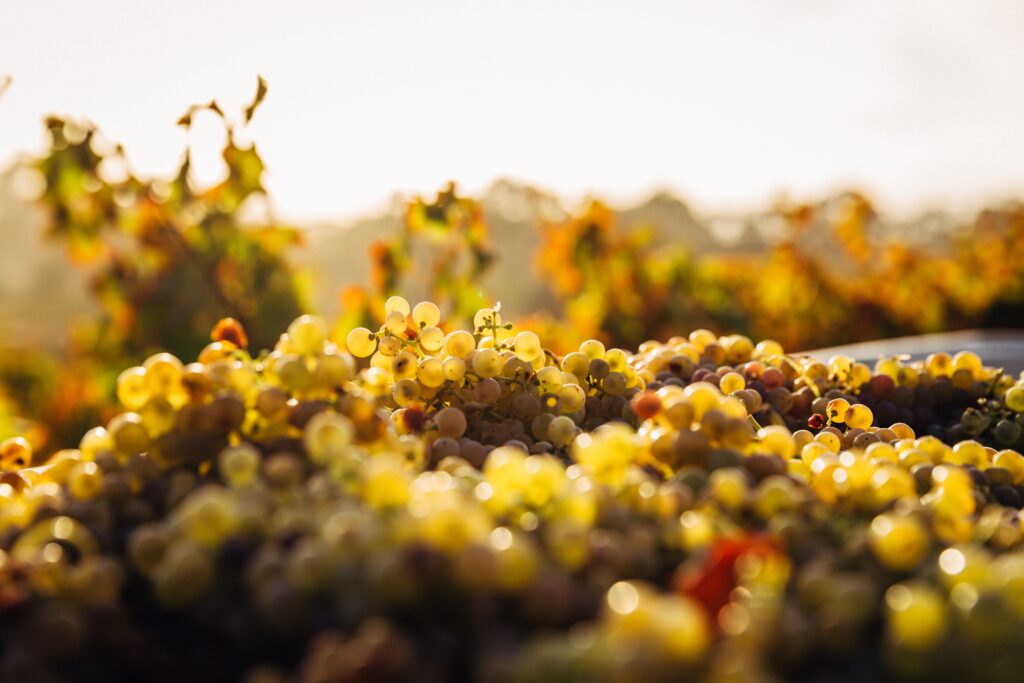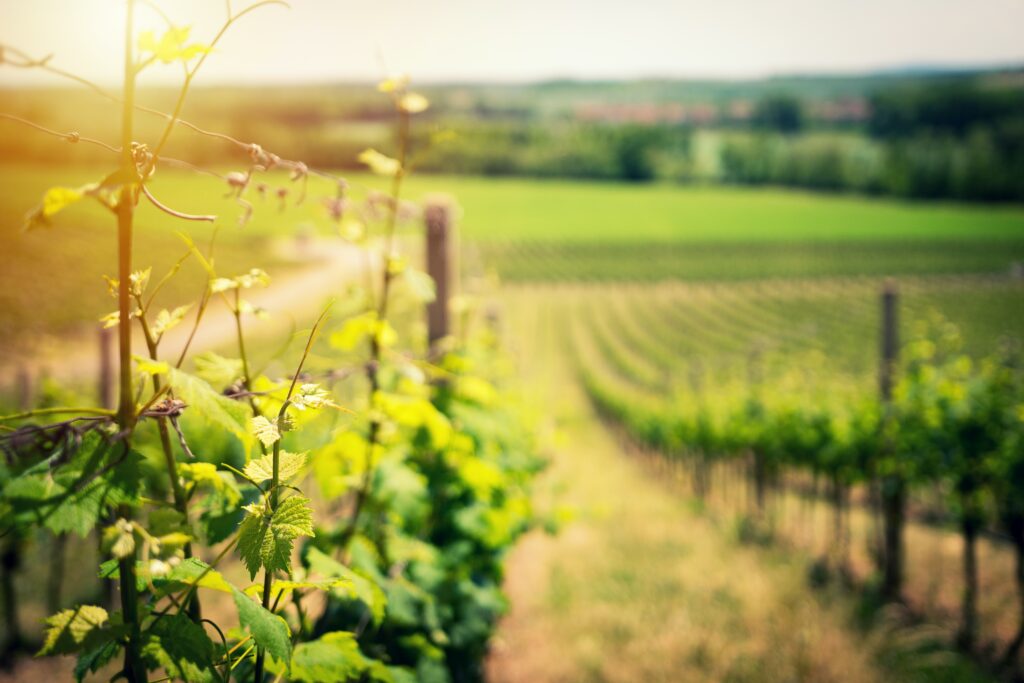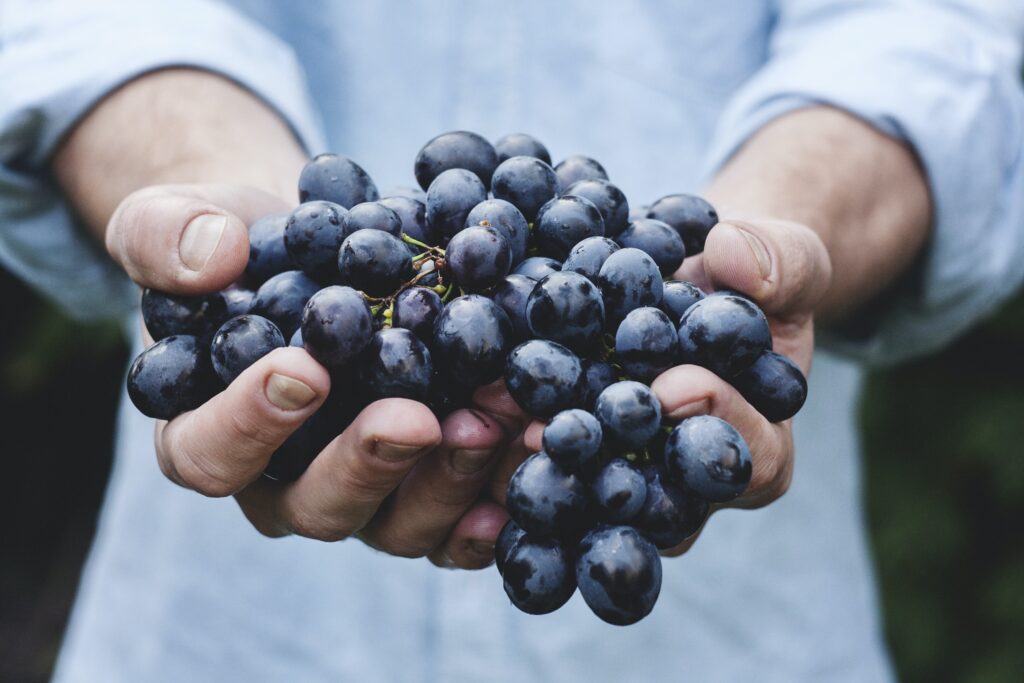Imagine this scenario: You’ve just finished setting up your home bar, complete with a collection of exquisite wines from around the world. Now, you’re faced with the decision of choosing the perfect wine fridge to complement your carefully curated selection. But here’s the intriguing question: does the exterior finish of a wine fridge really matter? In this article, we will explore the importance of the outer appearance of a wine fridge, uncovering surprising insights that might just change your perspective on this seemingly trivial choice. Get ready to uncork the truth and discover whether aesthetics are more than just skin-deep when it comes to choosing the perfect wine fridge.

Understanding the Function of a Wine Fridge
A wine fridge is an essential appliance for any wine enthusiast. It provides optimal conditions for storing and aging wine, ensuring that each bottle reaches its full potential. Understanding the function of a wine fridge is crucial to maintaining the quality and taste of your wine collection.
Fundamentals of wine storage
Proper wine storage requires three critical factors: temperature, humidity, and stability. Wine fridges are designed to control and maintain these factors to create an ideal environment for wine. Temperature regulation is of utmost importance as fluctuating temperatures can negatively impact the quality of wine. Additionally, humidity levels should be kept between 50-80% to prevent corks from drying out or becoming moldy. Lastly, wine should be stored in a stable environment to avoid agitation or vibration, which can disturb the sediment and alter the flavors.
How a wine fridge works?
Wine fridges, also known as wine coolers or wine cellars, work by utilizing a thermoelectric or compressor-based cooling system. Thermoelectric wine fridges use a small electric current to transfer heat, creating a cool interior. Compressor-based wine fridges, on the other hand, function similarly to a regular refrigerator, with a compressor and refrigerant that circulate cold air. Both systems offer efficient cooling, but thermoelectric models are generally quieter and more energy-efficient.
Importance of temperature regulation
Temperature plays a crucial role in wine storage, as it directly affects the aging process and overall quality of the wine. Maintaining a consistent temperature is essential to prevent the wine from spoiling or developing off-flavors. A wine fridge allows you to set and maintain the optimum temperature for your collection, whether you prefer red, white, or sparkling wines. With precise temperature regulation, you can ensure that each bottle reaches its full potential and is always ready to be enjoyed.
Analyzing Different Types of Wine Fridges
When it comes to wine fridges, there are several types to choose from, each offering unique advantages and functionalities. Understanding the differences between freestanding, built-in, and countertop wine fridges will help you make an informed decision about which type best suits your needs.
Freestanding wine fridges
Freestanding wine fridges are versatile and can be placed anywhere in your home or establishment. They are popular among wine enthusiasts due to their portability and ease of installation. These fridges come in various sizes and can accommodate a range of bottle capacities, making them suitable for both small and large collections. If you’re looking for flexibility and the ability to move your wine fridge around, a freestanding option might be the perfect choice for you.
Built-in wine fridges
Built-in wine fridges are designed to seamlessly integrate into your kitchen or cabinetry, offering a sleek and sophisticated look. These fridges are typically taller and narrower than freestanding models, allowing them to blend in with your existing appliances. Built-in wine fridges are a popular choice for homeowners who value aesthetics and want to create a cohesive design theme in their kitchen. However, it’s important to ensure proper ventilation and installation when opting for a built-in wine fridge to guarantee optimal performance.
Countertop wine fridges
Countertop wine fridges are compact and convenient, perfect for those with limited space or smaller wine collections. These fridges can fit on kitchen countertops, bars, or even office desks, making them a popular choice for wine enthusiasts with limited square footage. Countertop wine fridges are available in various sizes and styles, allowing you to select the one that best suits your needs and complements your existing décor. While countertop fridges offer convenience and accessibility, they may not provide the same storage capacity as freestanding or built-in models.
The Impact of Exterior Finish
While the functionality and performance of a wine fridge are paramount, the exterior finish plays a significant role in its overall appeal and integration into your space. Considering the impact of the exterior finish is essential to ensure that your wine fridge harmonizes with your existing decor and enhances the overall aesthetics of the room.
Role in aesthetics
The exterior finish of a wine fridge can greatly influence the overall appearance of the appliance and the surrounding area. Whether you prefer a sleek and modern look or a more traditional and rustic vibe, choosing the right exterior finish will help you achieve your desired aesthetic. The finish can make a statement or blend seamlessly with your existing furniture and decor, enhancing the visual appeal of the space.
Influencing the overall design
The exterior finish of a wine fridge is an integral part of its design, as it contributes to the overall style and ambiance of the room. A well-chosen finish can complement the surrounding decor and elevate the overall design scheme. Whether you opt for a stainless steel finish for a contemporary and sophisticated look or a wood finish for a warm and inviting atmosphere, the exterior finish can tie the entire room together and create a cohesive design.
Enhancing the appeal
The exterior finish of a wine fridge not only enhances the visual appeal but can also add a luxurious and premium feel to the appliance. A well-crafted finish can elevate the overall perception of the wine fridge, making it a focal point and conversation starter in the room. Additionally, a high-quality finish can demonstrate your attention to detail and commitment to style, further enhancing the appeal and sophistication of your space.
Composite Material Exterior Finish
Composite materials offer a wide range of advantages and versatility for the exterior finish of a wine fridge. Understanding the pros and cons of composite material finishes, as well as the different types available, will help you make an informed decision about whether this option is suitable for your needs.
Pros of composite material finish
Composite materials, such as high-quality plastic or resin blends, offer several benefits for the exterior finish of a wine fridge. These materials are often lightweight, durable, and resistant to scratching or chipping. Composite finishes are highly customizable, allowing for various colors and textures, giving you the freedom to match your fridge to your desired aesthetic. Additionally, composite materials are usually more affordable than other options, making them an attractive choice for budget-conscious individuals.
Cons of composite material finish
While composite material finishes offer numerous advantages, they also come with a few drawbacks to consider. Some composite materials may lack the same level of elegance and premium feel as other finishes, such as wood or metal. Additionally, certain composite finishes may not withstand prolonged exposure to sunlight or extreme temperatures, which could affect their longevity. It’s important to select high-quality composite materials and consider the environment in which the wine fridge will be placed to ensure the finish remains in optimal condition.
Types of composite materials used
There are various types of composite materials used for wine fridge exteriors, each with unique properties and characteristics. Some popular options include ABS (Acrylonitrile Butadiene Styrene), which is known for its strength and impact resistance, and PVC (Polyvinyl Chloride), which offers flexibility and resistance to moisture. Other composite materials used include HIPS (High Impact Polystyrene) and PMMA (Polymethyl Methacrylate), each with its own advantages and considerations. Researching the different types of composite materials will help you select the most suitable option for your wine fridge.

Metal Exterior Finish
Metal exterior finishes have long been associated with luxury and elegance. Understanding the types of metal finishes available, as well as the pros and cons of choosing a metal exterior, will help you determine whether this option aligns with your desired aesthetic and functional needs.
Types of metal finishes
Metal exterior finishes offer a wide range of options to suit various styles and preferences. Stainless steel is a popular choice due to its sleek and modern look, as well as its durability and resistance to rust. Other metal options include brass, copper, and bronze, each offering a unique color and finish. These metal finishes can add a touch of sophistication and timelessness to your wine fridge, making it an eye-catching focal point in any room.
Pros and cons of metal exterior
Metal exterior finishes offer several advantages that make them a popular choice for wine fridges. Firstly, metal finishes are known for their durability and resistance to wear and tear, ensuring that your wine fridge remains in excellent condition for years to come. Additionally, metal finishes are easy to clean and maintain, making them a practical choice for busy individuals. However, it’s important to note that metal exteriors can show fingerprints and smudges more easily, requiring regular cleaning to maintain their pristine appearance.
Durability of metal finishes
Metal exterior finishes are highly durable and built to withstand the test of time. This durability ensures that your wine fridge will remain in excellent condition, even with regular use and exposure to different environments. Metal finishes are resistant to scratches and dents, providing a long-lasting and low-maintenance option for wine enthusiasts. Investing in a wine fridge with a metal exterior ensures that you’ll have a reliable and visually appealing appliance for years of wine enjoyment.
Wood Exterior Finish
Wood exterior finishes offer a classic and timeless look for wine fridges, evoking a sense of elegance and sophistication. Understanding the advantages and drawbacks of wood exteriors, as well as the different types of wood used, will help you determine if this aesthetic choice aligns with your personal style and preferences.
Advantages of wood exterior
A wood exterior finish instantly adds warmth and character to any space, making it a popular choice for wine enthusiasts seeking a more traditional and inviting aesthetic. Wood finishes offer a wide range of colors and grains, allowing you to select the one that best complements your existing furniture and decor. Additionally, wood is a natural insulator, providing an extra layer of protection and stability for your wine collection. The richness and depth of a wood finish can create a cozy and intimate ambiance, perfect for showcasing your prized wines.
Drawbacks of wood around wine fridges
While wood finishes offer numerous advantages, they also require special consideration and maintenance. Wood is susceptible to fluctuations in temperature and humidity, which can affect its stability and appearance. It’s crucial to choose a high-quality and moisture-resistant wood finish to ensure its longevity in the specific environment of a wine fridge. Additionally, wood exteriors may require periodic refinishing or treatment to maintain their luster and protect them from stains or water damage.
Different types of wood used
There are various types of wood used for wine fridge exteriors, each with its own unique characteristics and aesthetic appeal. Common options include oak, cherry, mahogany, and walnut, each offering a distinct color and grain pattern. These woods can be stained or finished in different ways to achieve the desired look, whether it’s a rustic farmhouse style or a more refined and polished appearance. Researching the different types of wood and their suitability to the specific environment will help you select the perfect wood finish for your wine fridge.

Glass Exterior Finish
Glass exterior finishes are a modern and elegant choice for wine fridges, offering a sleek and sophisticated look. Understanding the superiority and limitations of glass exteriors, as well as the maintenance required, will help you determine if this option complements your desired aesthetic and functional needs.
Superiority of glass exterior
Glass exteriors for wine fridges create a visually striking and contemporary appearance. This clean and transparent finish allows the bottles to be prominently displayed, showcasing your collection as a work of art. Glass exteriors also create an illusion of more space, making them an excellent choice for smaller rooms or areas with limited natural light. Additionally, glass finishes are easy to clean, as they can be wiped down with a damp cloth, maintaining their pristine appearance effortlessly.
Limitations of glass exterior
While glass exteriors offer numerous advantages, they also have a few limitations to consider. Glass is a fragile material, which means it may not be suitable for households with young children or pets that can cause accidental breakage. Additionally, glass exteriors can be more prone to showing smudges and fingerprints, requiring regular cleaning to keep them looking their best. It’s also important to note that glass exteriors may not provide the same insulation as some other finishes, meaning you’ll need to ensure your wine fridge maintains the proper temperature and humidity levels.
Maintenance of glass finish
Maintaining a glass exterior finish is relatively straightforward. Regular cleaning with a glass cleaner or a mixture of water and vinegar will keep the surface free of smudges and fingerprints. It’s important to avoid using abrasive materials or harsh chemicals that may scratch or damage the glass. Additionally, if your wine fridge has interior lighting, ensure that the glass surfaces are free of dust and fingerprints to maximize the visual impact of your wine collection.
Importance of Maintenance based on Exterior Finish
Proper maintenance is crucial for any wine fridge, regardless of the exterior finish chosen. Different materials may require specific care and attention to ensure their longevity and optimal performance. Understanding the maintenance implications for various finishes, as well as the sustainability of certain finishes over others, will help you make an informed decision and extend the lifespan of your wine fridge.
Maintenance implications for different materials
Each exterior finish comes with its own maintenance requirements. Metal finishes, such as stainless steel, can be easily cleaned with a mild detergent and a soft cloth to remove fingerprints and smudges. Wood finishes may require periodic refinishing or treatment with a specialized wood cleaner to protect against moisture and maintain their appearance. Glass exteriors, while easy to clean, should be regularly checked for any cracks or damage that may compromise both the aesthetics and functionality of the wine fridge. Understanding the specific maintenance needs of your chosen exterior finish will help you keep your wine fridge in optimal condition.
Sustainability of certain finishes over others
When considering the sustainability of an exterior finish, factors such as durability and resistance to wear and tear are essential. Metal finishes, particularly stainless steel, are known for their longevity and ability to withstand daily use. High-quality composite materials can also offer long-term durability while being more budget-friendly. Wood finishes may require more maintenance and refinishing over time, but with proper care, they can still provide lasting appeal. Glass finishes require cautious handling due to their fragility but can maintain their visual impact with regular upkeep.
Tips for maintaining various finishes
Regardless of the exterior finish, there are general tips to ensure the longevity and performance of your wine fridge. Regularly clean the exterior with appropriate cleaning products and materials to remove any dirt or stains. Avoid using abrasive materials or harsh chemicals that may damage the finish. Pay attention to any signs of wear or damage, such as scratches or cracks, and address them promptly. Be mindful of the specific maintenance requirements of your chosen finish, such as refinishing or moisture protection for wood finishes. By following these maintenance tips, you can ensure that your wine fridge remains in excellent condition, providing optimal wine storage for years to come.
In conclusion, while the functionality and performance of a wine fridge are crucial, it’s vital not to overlook the importance of the exterior finish. The exterior finish has a significant impact on the overall aesthetics and integration of the wine fridge into your space. Whether you prefer the modern and sleek look of a glass finish, the timeless elegance of wood, the luxurious appeal of metal, or the versatility of composite materials, understanding the advantages, drawbacks, and maintenance requirements of each finish will help you make an informed decision. By selecting the right exterior finish for your wine fridge, you can create a visually appealing and cohesive design while ensuring that your wine collection is stored in an environment that preserves its quality and taste.
